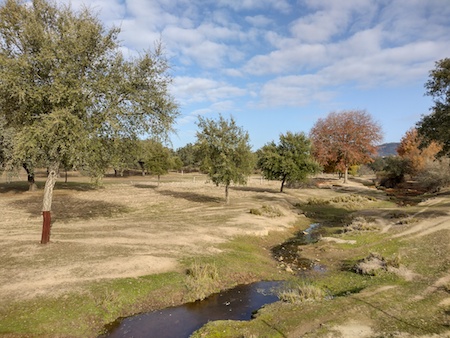
Rafa & I continue to explore the large number of walking trails in our area, & this is the most well-known. Its first two sections are beautiful with several opportunities to spot horses, sheep, cattle & even pigs! Although lengthy, the route is generally flat with well-maintained backroads & paths. Take a picnic lunch, & spend a fun afternoon walking through this biosphere/natural park.
Route basics
- Type of trail: Circular.
- Total length: 11.9 km, or 7.4 mi.
- Max altitude difference: 94 m or 300 ft.
- Lowest to highest altitude: 337-431 m, or 1105-1414 ft.
- Our walk time: 4 hrs, including a lunch break of about 30 min.
- Official brochure: Junta de Andalucía, Spanish only.
It’s easy to see why this one of the most popular walks near El Pedroso; the route is well-signposted, with little difference in altitude, & has a wide variety of flora & fauna typical to the Sierra Morena. As seen on the map, the trail is divided into three separate stages. The first part descends to the “Cane Stream,” the second takes you along or near the water through private farms, & the third stretch leads up again to town. Find Bar Triana in El Pedroso, cross the street & you’ll see the first signposts to begin this journey:
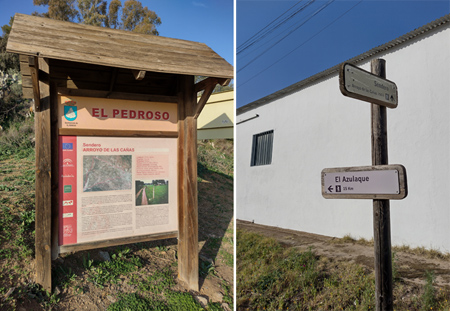
Stage 1
The walk starts with a quick look at some local industry. The almazara —a Spanish word derived from the Arabic al-maʿṣara or “mill”— processes the olive harvest into incredibly tasty, unfiltered oil. Many shops in El Pedroso sell the local juice, currently running 23€ per five-liter jug. Next is a warehouse where ham legs are cured over several months to make jamón serrano, also available in town:

Soon you’re in farmland! A sign (in Spanish only) explains one of the significant geological features of this part of the sierra: a berrocal. These craggy rocks are formed by water filtration. Over time, water seeps into the ground & carries away soil plus lighter minerals such as quartz & mica. Left behind is granite that is subject to weathering & rounded on the edges. Rock formations become a safe haven for seedlings to grow, so trees often sprout from the middle of each berrocal:

We said hi to some goats, two horses, a few cattle & one very friendly dog along the way. I love all the cork trees, but the huge eucalyptus stole the show. Once you enter the olive grove, you’ve almost completed this section of the trail:
Stage 2
Although tempting to continue straight through the olive grove, don’t miss the sign that points right! You’re halfway done, & the best is yet to come. After passing more olive trees on your right, you’ll soon come to a sign that requests you to close the gate after entering. Welcome to free-range pig territory! If animals are absent here, you’ll find their mud baths (with or without water). Many berrocales just after closing the gate make for fun picnic seats… but remember to take out everything you brought in!
We encountered a couple more gates to open & close along the way, but we didn’t expect an adventure. Oddly no pigs were around, then we stumbled onto a HUGE pack. In December, they’d already eaten most of the acorns dropped by oak trees & were absolutely gigantic… some resting in the sun, some snacking on acorn leftovers or a few getting skittish & running away.
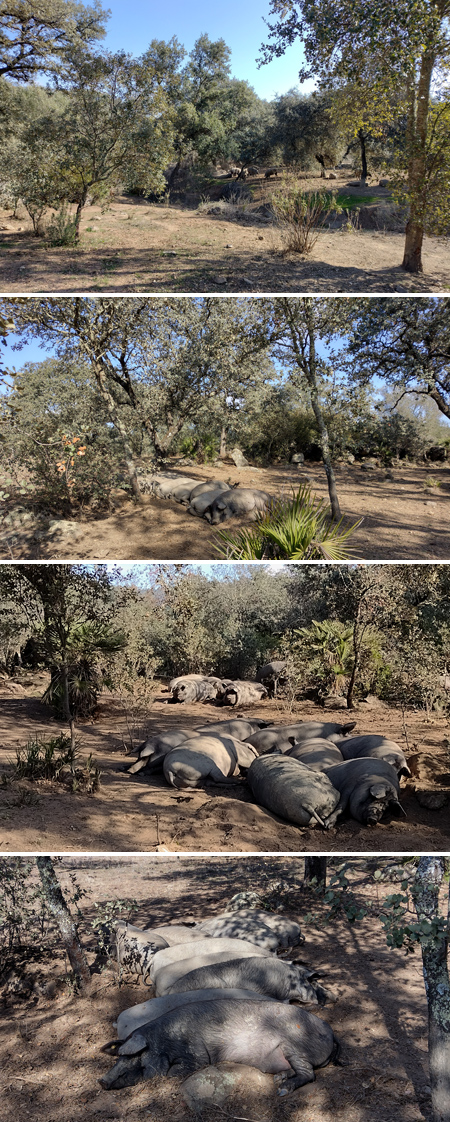
Our biggest shock came when trying to continue the trail quietly. We thought most pigs were on the other side of the stream… but no. We walked right in the middle of two small groups that easily blended into the landscape. We had to take a wide detour & catch up to the path later. It was all we could do not to laugh & wake up these sleeping beauties.
After our pig experience, the last part of this stage was well marked & more wide open. One last gate to open:
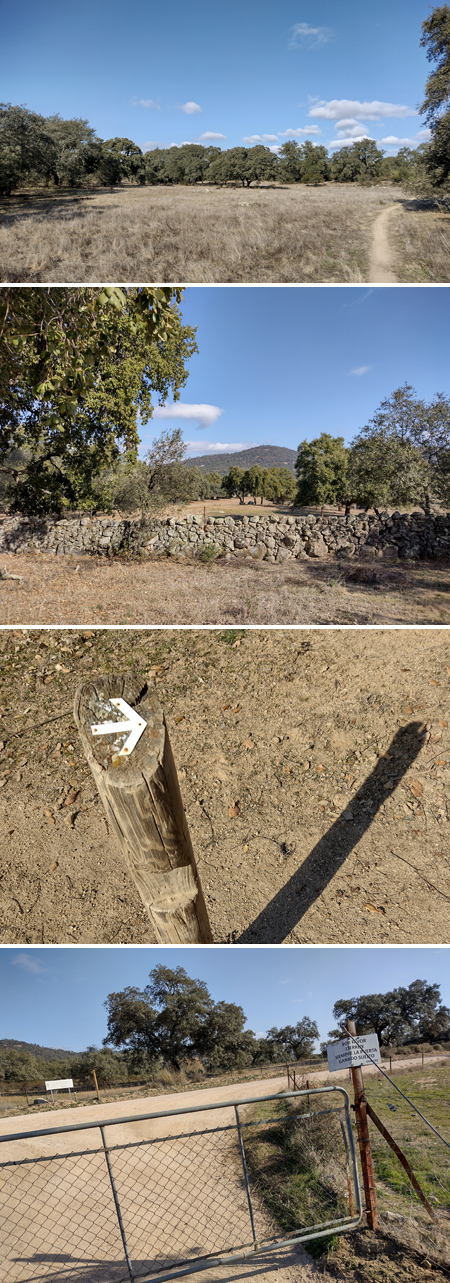
Stage 3
Follow signs to turn right & walk on the wide, gravel road. While not the most interesting section of the trail, farms sport a bit of color in springtime as wildflowers bloom everywhere. This is also the most challenging part of the entire route, with a slight but steady incline until the end of the road. Once you make it to the intersection with a paved road, take another right. The green pedestrian path takes you to a fork in the road at the Virgen del Espino shrine; take the left path to go to the center of town for a drink, or head right to return to the start point. The choice is yours.


Whether you see few or many animals along the way, the natural landscape makes this a wonderful trail for everyone… if you can endure that ho-hum final stage. No wonder this portion of the Sierra Morena was declared a natural park in 1989 by the Spanish government & a UNESCO Global Geopark in 2015. I’ll continue to post about our hikes here; just search for the word “trail” to find others!
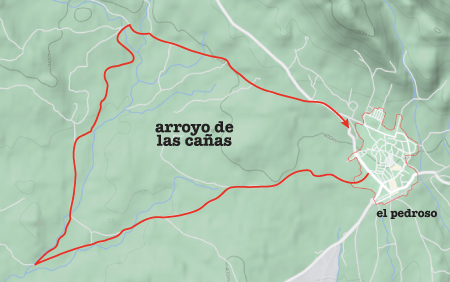
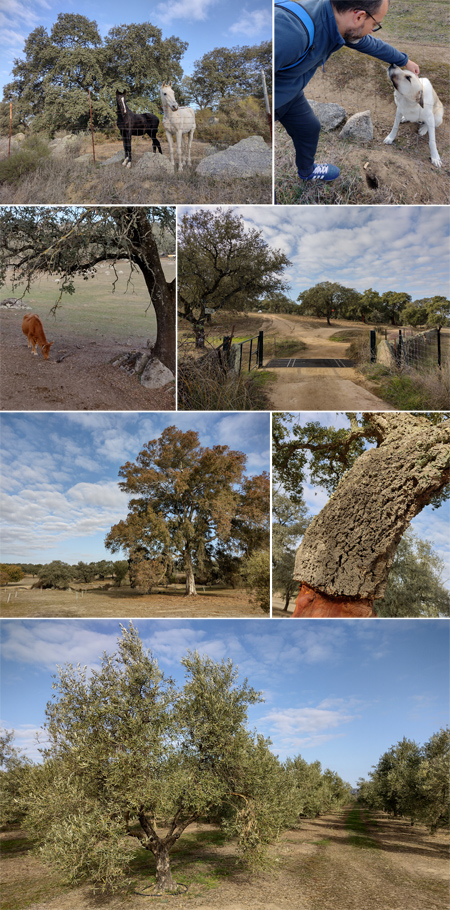
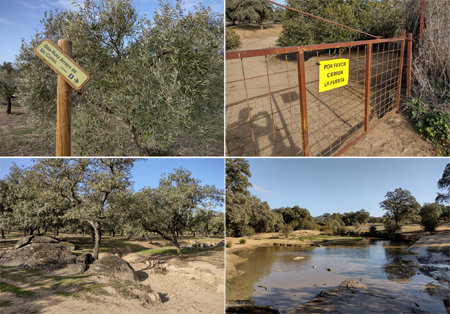
El Arroyo El Pedroso en Andalucía es un lugar maravilloso y lleno de encanto. Esta corriente de agua serpenteante crea un entorno natural impresionante, con una gran diversidad de flora y fauna. Es un refugio perfecto para aquellos que buscan escapar del bullicio de la ciudad y conectar con la naturaleza.
Una de las cosas más destacadas del Arroyo El Pedroso es su agua cristalina. Es un placer ver cómo fluye el agua entre las rocas y los árboles, creando pequeñas cascadas y piscinas naturales. Sumergirse en estas aguas frescas y puras es una experiencia revitalizante y relajante.